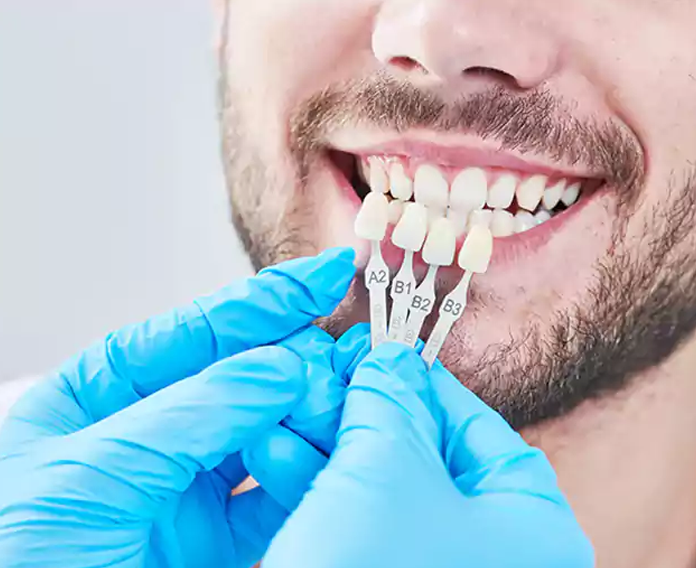Who Can Have Composite Bonding?
Introduction
Composite bonding is a versatile cosmetic dental treatment using tooth-coloured resin to improve appearance. It’s not suitable for everyone—but many patients qualify. This page explains the characteristics of good candidates, when bonding may be limited, and how we will assess whether it’s right for you.

Ideal Candidates for Composite Bonding
Composite bonding may be suitable if you:
- Have minor chips, cracks or surface damage to teeth
- Want to close small gaps (diastemas) between teeth
- Seek to correct small shape or contour imperfections
- Wish to modify the appearance of slightly uneven, short or tapered teeth
- Want to repair mild wear or abrasion on front teeth
- Prefer a minimally invasive option that preserves natural tooth structure
- Desire cosmetic improvements that are faster and more affordable than veneers or crowns
Because bonding can be done with minimal removal of your original tooth, many people find it an attractive option for moderate aesthetic corrections.

Conditions That Favor Bonding
To ensure good outcomes, composite bonding works best when:
- The existing teeth are structurally sound, without extensive decay or large, previously restored areas
- The enamel surface is healthy and can support the resin bond
- Tooth alignment is relatively mild—severe misalignment may be better treated with orthodontics first
- You have good oral hygiene and are committed to maintaining results
- You accept that composite resin, while strong, is not as durable as crowns or veneers
If these conditions are met, bonding can often deliver pleasing aesthetic results with minimal intervention.

When Composite Bonding May Be Less Suitable
Composite bonding is not always the best choice if:
- Teeth have extensive decay, cracks, or structural weakness — stronger restorations (crowns, onlays) may be safer
- There is significant misalignment or malocclusion — orthodontic treatment might precede cosmetic work
- You require large changes in colour or major transformation — porcelain veneers may deliver more predictable aesthetics
- You have bruxism (teeth grinding) or heavy bite forces — resin may chip or wear over time
- You have active gum disease or untreated dental issues — these need addressing first
- You’re looking for a long-term permanent solution — composite bonding has a limited lifespan and may need repair or replacement
Your dentist will consider these limitations when recommending whether bonding is suitable for your case.
Assessment Process & Decision Criteria
When you come for a consultation, here’s what we’ll evaluate:
-
Oral health & tooth structure
We’ll examine for decay, cracks, existing fillings or structural weaknesses that could compromise bonding.
-
Tooth shape, alignment & spacing
We’ll determine how much modification is needed, and whether orthodontic correction is beneficial first.
-
Enamel quality & thickness
Strong bonding needs a good enamel foundation. Worn or eroded enamel may limit the amount of resin we can safely place.
-
Occlusion & bite forces
We’ll check how your teeth meet and whether you habitually grind or clench, which may influence material choice and layer planning.
-
Cosmetic goals & expectations
We’ll talk about how much change you want—shape, size, symmetry—and agree on what realistic results are.
-
Maintenance & lifestyle
We’ll discuss your oral hygiene habits, dietary choices, and willingness to attend follow-ups and potential touch-ups.
If after this evaluation bonding looks appropriate, we’ll propose a precise plan (which teeth, how much resin, layering technique) and walk you through potential risks and benefits.
Benefits for Qualified Candidates
If you qualify, composite bonding offers:
- A conservative approach that preserves natural tooth tissue
- More cost-effective than veneers or crowns in many cases
- Quick turnaround — many cases completed in a single visit
- Ability to correct minor defects with aesthetic improvement
- Possibility of partial repair or adjustment later if needed
Many patients choose composite bonding because it improves appearance without the need for extensive tooth removal or more invasive procedures.
- Monday 09:00AM - 08:00PM
- Tuesday 09:00AM - 08:00PM
- Wednesday 09:00AM - 08:00PM
- Thursday 09:00AM - 08:00PM
- Friday 09:00AM - 08:00PM
- Saturday 09:00AM - 08:00PM
- Sunday 09:00AM - 04:00PM






